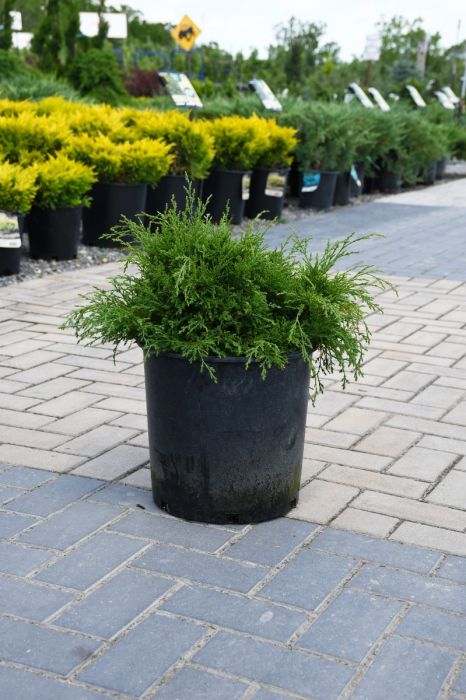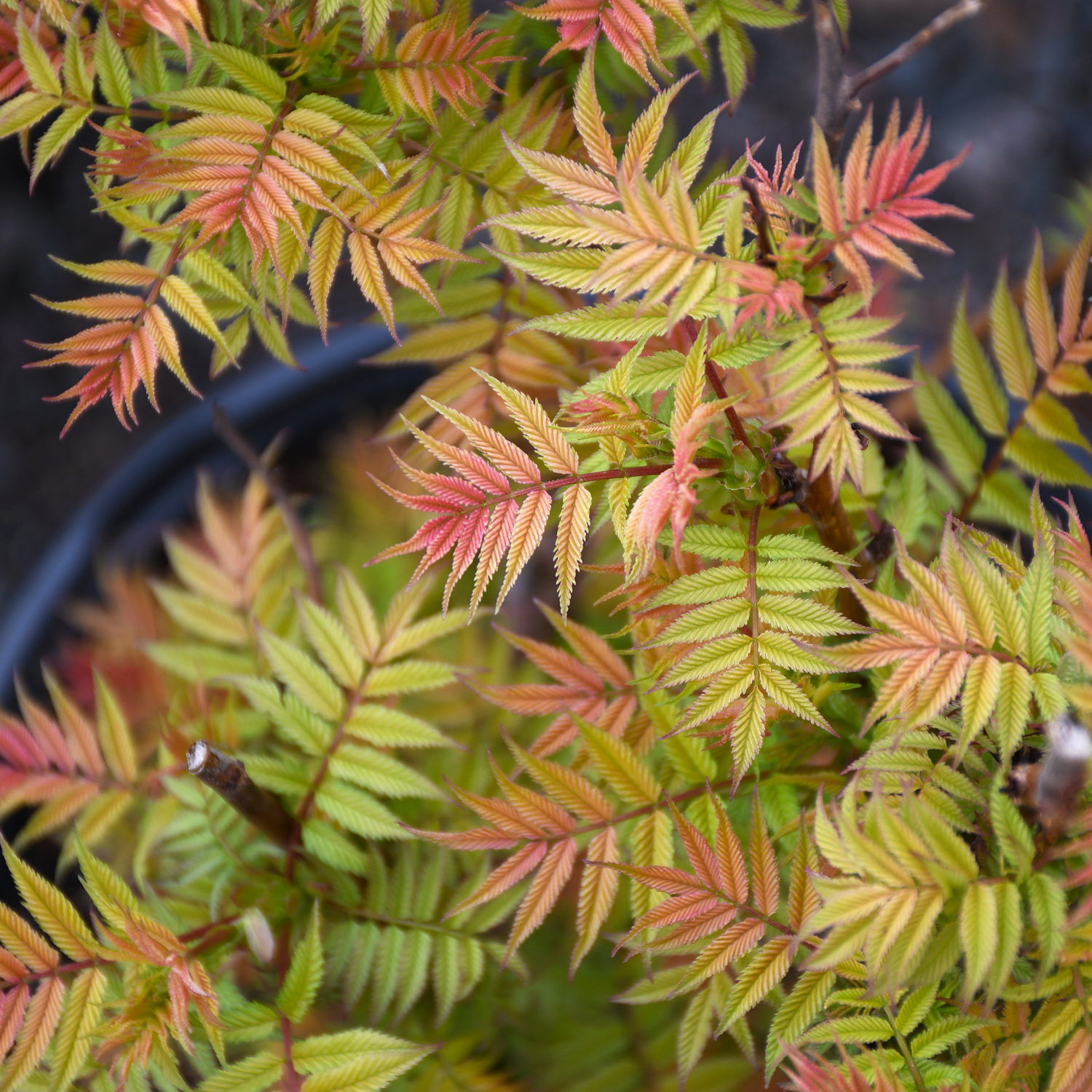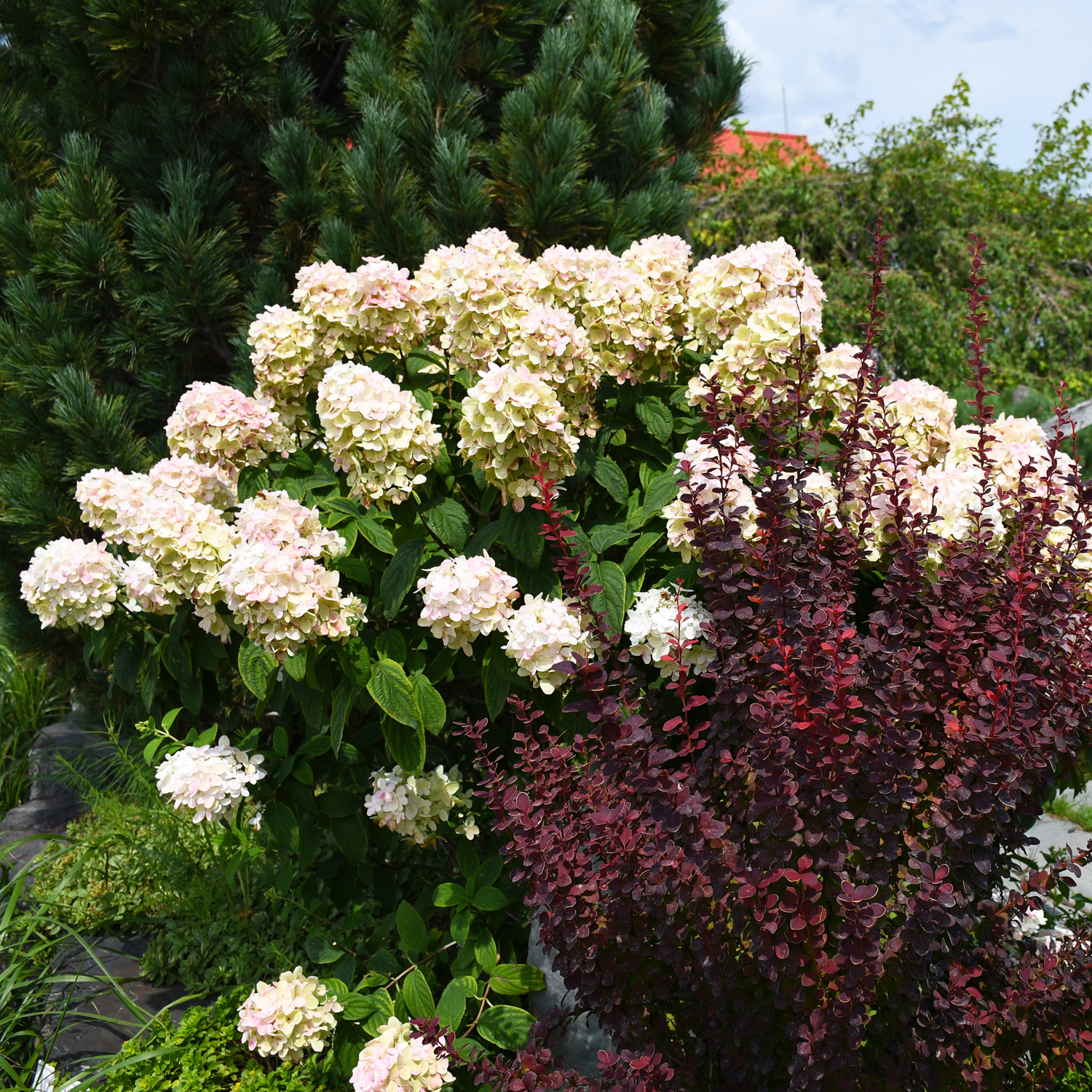Microbiota, Russian Cypress



Out of stock
Coming soon, still growing- Sun Preference
- Full-Sun, Part-Sun
Description
Low, spreading form with arborvitae-like foliage. Plants will tolerate some shade. Needs good drainage. Green foliage turns bronze during the winter.
Minnesota's Largest Selection of Shrubs
Elevate your landscaping with Gertens' unmatched variety of shrubs! Selecting the right shrubs for your backyard can enhance its beauty and functionality. Consider factors like sunlight, soil type, and mature size when choosing shrubs. For sunny areas, flowering shrubs like roses or hydrangeas can add color and charm. In shady spots, opt for shrubs like azaleas or hostas. Evergreen shrubs provide year-round interest and privacy, while deciduous shrubs offer seasonal color changes. At Gertens, we offer a wide selection of shrubs to suit every backyard need.
Details
Height: 15 inches
Spread: 4 feet
Sunlight: ![]()
![]()
![]()
Hardiness Zone: 2a
Other Names: Russian Arborvitae
Description:
A little known but hardy wide-spreading groundcover evergreen, closely resembles a spreading juniper in shape but with the foliage of arborvitae; unlike juniper, performs very well in shade, also needs well-drained but moist soils and wind protection
Ornamental Features
Russian Cypress has green foliage. The scale-like leaves turn coppery-bronze in fall. Neither the flowers nor the fruit are ornamentally significant.
Landscape Attributes
Russian Cypress is a multi-stemmed evergreen shrub with a ground-hugging habit of growth. Its relatively fine texture sets it apart from other landscape plants with less refined foliage.
This shrub will require occasional maintenance and upkeep, and is best pruned in late winter once the threat of extreme cold has passed. It has no significant negative characteristics.
Russian Cypress is recommended for the following landscape applications;
- Mass Planting
- General Garden Use
- Groundcover
Planting & Growing
Russian Cypress will grow to be about 15 inches tall at maturity, with a spread of 4 feet. It tends to fill out right to the ground and therefore doesn't necessarily require facer plants in front. It grows at a slow rate, and under ideal conditions can be expected to live for approximately 30 years.
This shrub performs well in both full sun and full shade. It is very adaptable to both dry and moist growing conditions, but will not tolerate any standing water. It is not particular as to soil type or pH. It is somewhat tolerant of urban pollution, and will benefit from being planted in a relatively sheltered location. Consider applying a thick mulch around the root zone in winter to protect it in exposed locations or colder microclimates. This species is not originally from North America.
| SKU | Container Size |
| E1090 | #2 Container (2 Gallon) |
| E1100 | #5 Container (5 Gallon) |
| E1101 | #10 Container (10 Gallon) |
* Not all container sizes may be available at this time. See store for details on specific container size availability.
Russian Cypress | Microbiota decussata
15 inches
Spread: 4 feet
Sunlight: full sun to full shade
Hardiness Zone: 2a
Other Names: Russian Arborvitae
Description:
A little known but hardy wide-spreading groundcover evergreen, closely resembles a spreading juniper in shape but with the foliage of arborvitae; unlike juniper, performs very well in shade, also needs well-drained but moist soils and wind protection
Ornamental Features
Russian Cypress is a dwarf conifer which is primarily valued in the garden for its broadly spreading habit of growth. It has rich green evergreen foliage. The scale-like sprays of foliage turn coppery-bronze in the fall, which persists throughout the winter.
Landscape Attributes
Russian Cypress is a multi-stemmed evergreen shrub with a ground-hugging habit of growth. Its relatively fine texture sets it apart from other landscape plants with less refined foliage.
This shrub will require occasional maintenance and upkeep, and is best pruned in late winter once the threat of extreme cold has passed. It has no significant negative characteristics.
Russian Cypress is recommended for the following landscape applications;
- Mass Planting
- General Garden Use
- Groundcover
- Planting & Growing
Russian Cypress will grow to be about 15 inches tall at maturity, with a spread of 4 feet. It tends to fill out right to the ground and therefore doesn't necessarily require facer plants in front. It grows at a slow rate, and under ideal conditions can be expected to live for approximately 30 years.
This shrub performs well in both full sun and full shade. It is very adaptable to both dry and moist growing conditions, but will not tolerate any standing water. It is not particular as to soil type or pH. It is somewhat tolerant of urban pollution, and will benefit from being planted in a relatively sheltered location. Consider applying a thick mulch around the root zone in winter to protect it in exposed locations or colder microclimates. This species is not originally from North America.
More Information
| Gerten Grown Plants | Gerten Grown Plants |
|---|---|
| Sun Preference | Full-Sun, Part-Sun |
| Mature Height (Range) | under 2 feet |
| USDA Hardiness Zone | 2, 3, 4, 5, 6, 7 |
| Common Family Name | Cypress |


